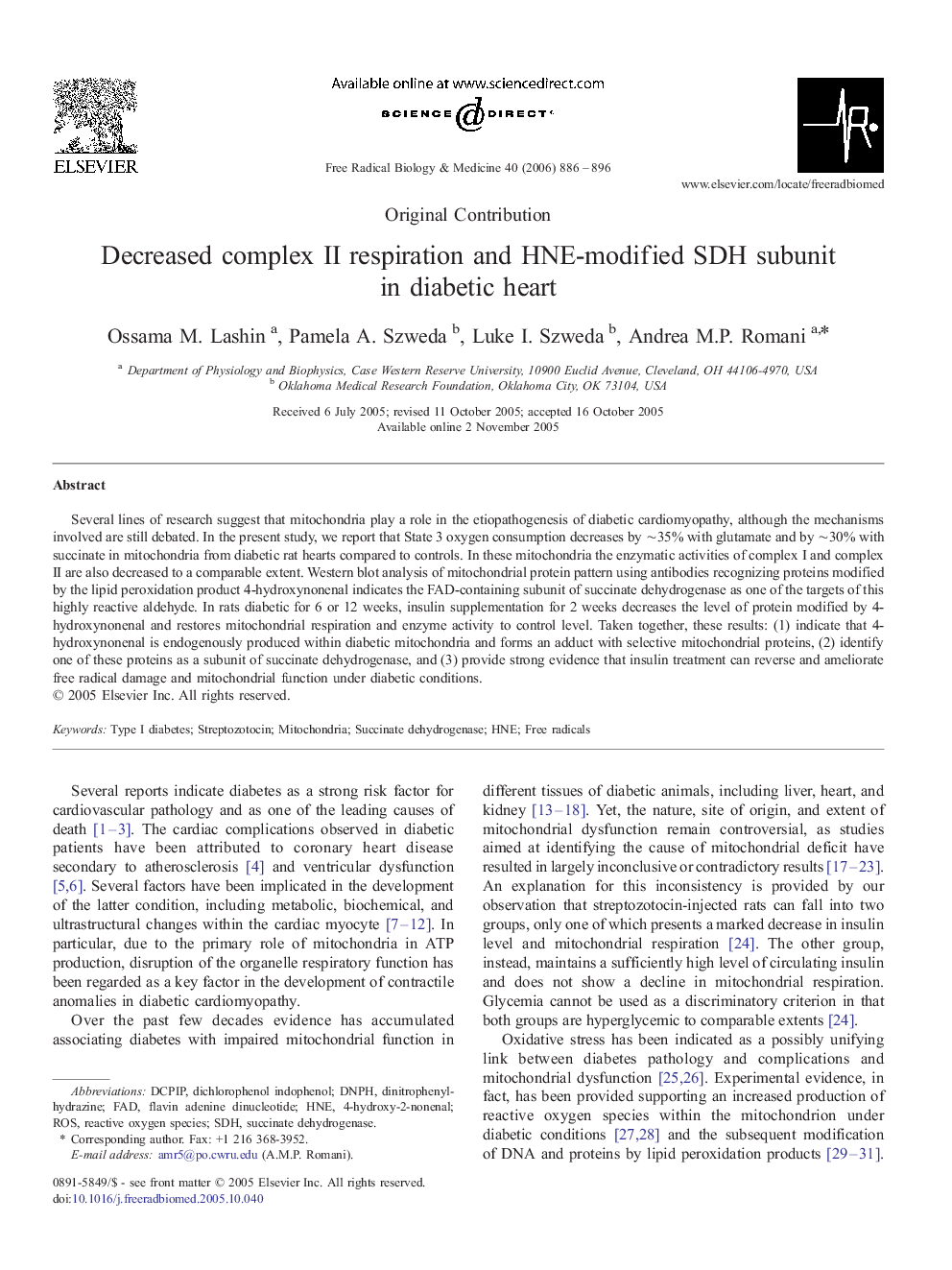| Article ID | Journal | Published Year | Pages | File Type |
|---|---|---|---|---|
| 1911546 | Free Radical Biology and Medicine | 2006 | 11 Pages |
Several lines of research suggest that mitochondria play a role in the etiopathogenesis of diabetic cardiomyopathy, although the mechanisms involved are still debated. In the present study, we report that State 3 oxygen consumption decreases by ∼35% with glutamate and by ∼30% with succinate in mitochondria from diabetic rat hearts compared to controls. In these mitochondria the enzymatic activities of complex I and complex II are also decreased to a comparable extent. Western blot analysis of mitochondrial protein pattern using antibodies recognizing proteins modified by the lipid peroxidation product 4-hydroxynonenal indicates the FAD-containing subunit of succinate dehydrogenase as one of the targets of this highly reactive aldehyde. In rats diabetic for 6 or 12 weeks, insulin supplementation for 2 weeks decreases the level of protein modified by 4-hydroxynonenal and restores mitochondrial respiration and enzyme activity to control level. Taken together, these results: (1) indicate that 4-hydroxynonenal is endogenously produced within diabetic mitochondria and forms an adduct with selective mitochondrial proteins, (2) identify one of these proteins as a subunit of succinate dehydrogenase, and (3) provide strong evidence that insulin treatment can reverse and ameliorate free radical damage and mitochondrial function under diabetic conditions.
